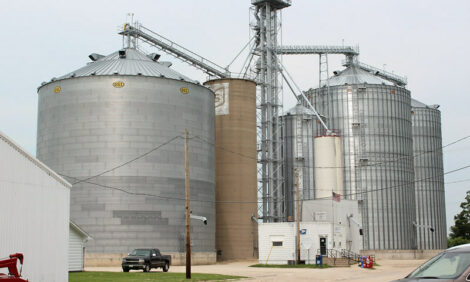



Meeting Addresses Antibiotic Use in Food Chain
US - A conference last week entitled Minimizing Antibiotic Resistance Transmission Through the Food Chain revealed widespread concern among academics and the USDA that antibiotic resistance remains a problem."The rapid emergence of antibiotic resistant pathogens has major public health and social impact," said Dr. Hua H. Wang, a food scientist at Ohio State University, Columbus, Ohio, at a conference here addressing the growing tendency of disease-causing organisms to be able to resist antibiotic drugs and drug therapy meant to fight them, both in animals and humans.
The conference, Minimizing Antibiotic Resistance Transmission Through the Food Chain, was jointly sponsored by the Cooperative State Research, Education, and Extension Service (CSREES) of the US Department of Agriculture, the Ohio State University Extension, and Ohio Agriculture Research and Development Center. Leading the conference, in addition to Dr Wang, were Dr John N. Sofos, Center for Meat Safety and Quality, Colorado State University, Fort Collins, Colorado, and Dr Thaddeus B. Stanton of USDA's Agricultural Research Service, Ames, Iowa.
Dr Wang said in the last couple of decades, an intensive discussion on the correlation between the use of antibiotics in human and veterinary medicine, food animal production, agriculture applications and the development of resistance in human pathogens has been a hot topic in science which has led to several government policy changes in both the EU and the US. "The problem of antibiotic resistance still exists," she said.
Speakers at the conference noted bacteria and other microorganisms causing infections are remarkably resilient and can develop ways to survive drugs meant to weaken them. This antibiotic resistance is due largely to the increasing use of antibiotics, although several speakers noted the problem is complex and cannot be tied simply to this use. Speakers pointed out that that food-producing animals are given antibiotic drugs for important therapeutic, disease prevention or production reasons. However, these drugs can cause microbes to become resistant to medications used to treat human illnesses, ultimately making some human sicknesses more difficult to treat.
Does this mean antibiotic use in agriculture should be curtailed? That was the question addressed by keynote speaker Dr Abigail Salyers, from the Department of Microbiology, University of Illinois, Urbana, Illinois. She said even though antibiotics are usually used at very low concentrations in agriculture, they can still select for antibiotic-resistant bacteria.
"The resistant bacteria then enter the food supply. A potential hazard of consuming such food is that resistant bacterial pathogens such as Salmonella typhimurium can cause disease," she said. "Another potential hazard seldom considered but probably more serious is the transfer of resistance genes from bacteria passing through the human intestinal tract to bacteria normally occupying that site. Such bacteria are common causes of post-surgical infections." There is not yet enough data to enable scientists to quantify the risks associated with such scenarios, but there is evidence such scenarios are possible, she added.
In speaking about antibiotic resistance in meats and other foods, Dr Sofos pointed out antimicrobials find numerous beneficial applications in human, animal and plant health, as well as in food production. Their selective pressure, however, may lead to the emergence of resistant pathogen strains.
"Therefore, it is important to maintain the ability of pathogens to be affected by antimicrobials," he said. "The best approach to minimising antibiotic resistance negative impact is through risk assessments. Major recommendations for control include prevention of disease; use of antibiotics of lesser importance to human medicine, and treatment with alternative methods, including vaccines."
Dr Sofos noted in tracking resistance of Salmonella to antibiotics in eight beef plants, resistance occurred mostly on cattle hides, but only a small amount of resistance to antibiotics existed on beef carcasses, notes the Meat and Poultry report. "There was more resistance by the Campylobacter pathogen in poultry," he noted. "Research should also focus on the potential of antibiotics to enter animal production environments through waste streams."
TheCattleSite News Desk


